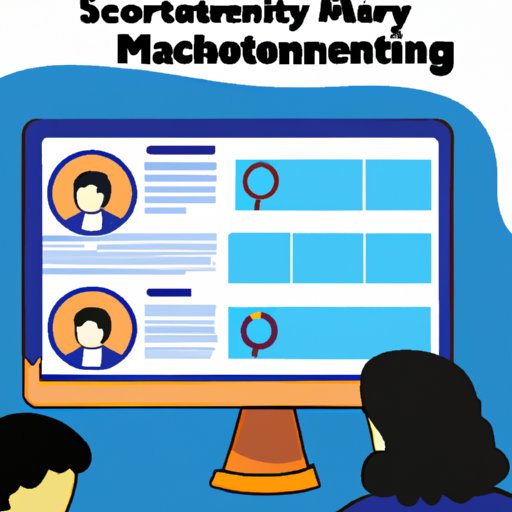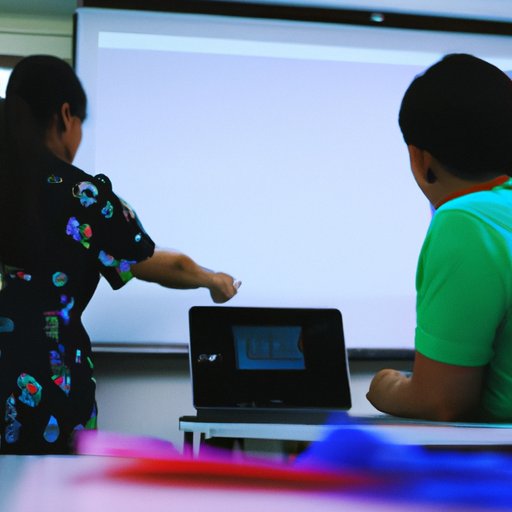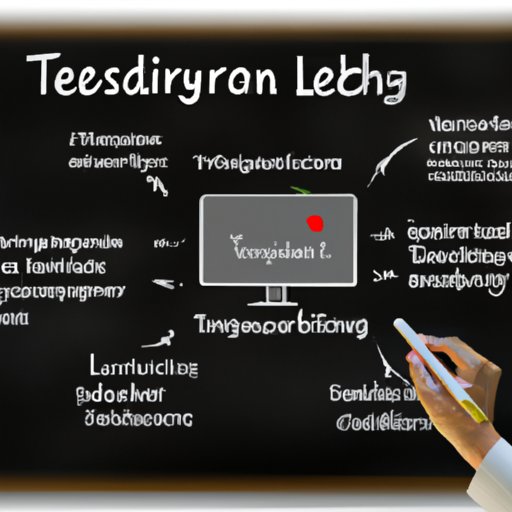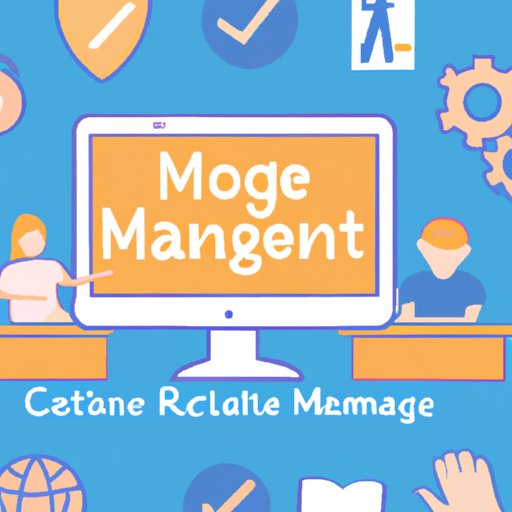Introduction
In today’s world, technology is becoming increasingly prevalent in the classroom. From laptops and tablets to interactive whiteboards and digital textbooks, technology is transforming the way that students learn and interact with their environment. While technology can be a powerful tool for learning, it is important to understand how to manage technology in the classroom in order to ensure that it is used safely and responsibly.
The purpose of this article is to provide teachers and administrators with an overview of how to manage technology in the classroom. We will discuss strategies such as establishing clear rules and guidelines, utilizing monitoring software, setting up filtering and blocking software, providing training and education, limiting time spent on technology, and creating a digital citizenship program.
Establish Clear Rules and Guidelines for Technology Use
One of the most important steps in managing technology in the classroom is to establish clear rules and guidelines for its use. It is important to set expectations for appropriate use, such as no texting during class or no playing games on school devices. It is also important to develop rules that are easy to understand and enforce. For example, if students are not allowed to use cell phones in class, make sure they are aware of the consequences for breaking the rule.

Utilize Monitoring Software to Supervise Student Activity
Another way to manage technology in the classroom is to utilize monitoring software. There are many different types of monitoring software available, so it is important to choose one that is appropriate for your school. Once you have chosen the right software, make sure that all students have access to it. This will allow teachers to monitor student activity and ensure that they are using technology safely and responsibly.
Set Up Filtering and Blocking Software to Control Access to Inappropriate Content
In addition to monitoring software, it is also important to set up filtering and blocking software to control access to inappropriate content. It is important to understand the types of content that need to be blocked, such as pornographic websites or hate speech. Once you know what needs to be blocked, you can learn how to configure the settings to block certain content.

Provide Training and Education for Teachers on How to Manage Technology in the Classroom
In order to effectively manage technology in the classroom, teachers must be properly trained and educated on the topic. Schools should offer resources to help teachers understand the basics of technology in the classroom, such as how to set up and use various types of software. Additionally, schools should incorporate technology into professional development opportunities, such as workshops and seminars, to ensure that teachers are up to date on the latest trends and tools.
Limit Time Spent on Technology in the Classroom
It is also important to limit the amount of time that students spend on technology activities in the classroom. Establish a limit for the amount of time that can be spent on technology activities and make sure that students are aware of it. Additionally, it is important to monitor usage to ensure that students are not overusing technology or spending too much time on activities that do not support learning objectives.

Create a Digital Citizenship Program to Promote Responsible Technology Use
Creating a digital citizenship program is another important step in managing technology in the classroom. A digital citizenship program is designed to educate students about the responsible use of technology and promote positive behaviors. Schools should establish rules and guidelines that promote digital citizenship, such as respecting others online and being aware of cyberbullying.

Integrate Technology into Lesson Plans to Enhance Learning Opportunities
Finally, it is important to integrate technology into lesson plans to enhance learning opportunities. Identify ways to incorporate technology into existing lesson plans, such as having students create presentations or engaging in online discussions. Additionally, use technology to supplement existing instruction, such as providing students with online resources or videos.
Conclusion
In conclusion, managing technology in the classroom can be challenging but can also be extremely beneficial for students. By establishing clear rules and guidelines, utilizing monitoring software, setting up filtering and blocking software, providing training and education for teachers, limiting time spent on technology, and creating a digital citizenship program, schools can ensure that technology is being used safely and responsibly.
We hope that this article has provided you with some helpful information on how to manage technology in the classroom. Now is the time to begin implementing these changes in order to ensure that technology is being used to its fullest potential.
(Note: Is this article not meeting your expectations? Do you have knowledge or insights to share? Unlock new opportunities and expand your reach by joining our authors team. Click Registration to join us and share your expertise with our readers.)
